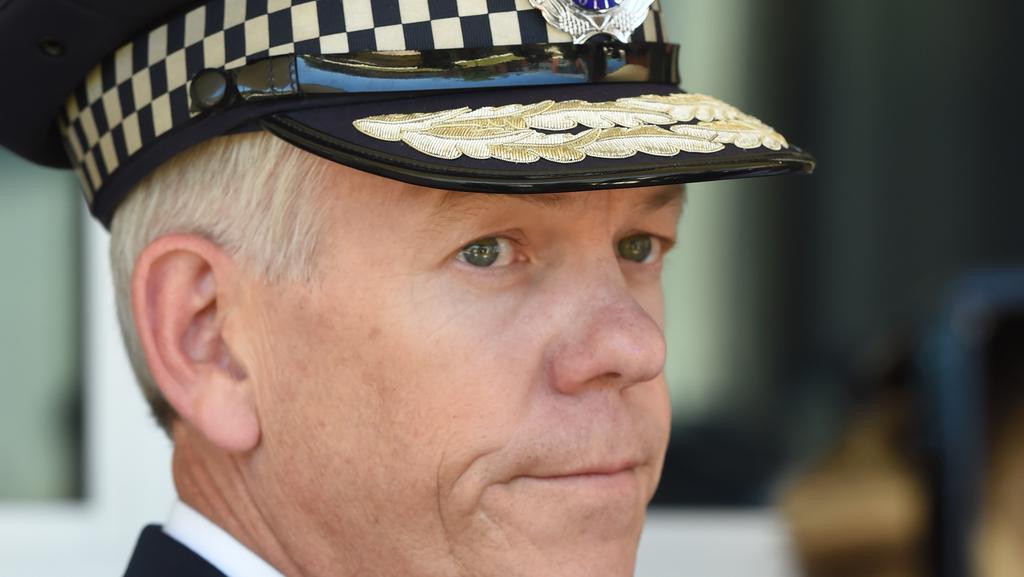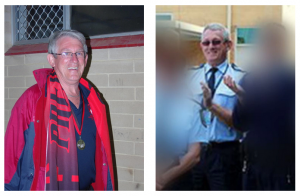Coroner Questions SAPOL Shoot-to-Kill Policy; Police Commissioner Gets Annoyed & Issues Failed Legal Challenge

Last year, South Australian Deputy Coroner Anthony Schapel made a request for SAPOL to consider whether it is “reasonable” to always shoot high-risk threats in the torso and instead aim for limbs in some cases.
“The SAPOL (SA Police) policy is that if it is necessary to use a firearm to disable a human threat, the centre mass of the individual is the appropriate target,” he said.
“Clearly this is more likely to result in death or very serious injury as distinct from a situation where a limb is the target.”
While conceding the policy may be an appropriate defensive response in many cases, Schapel also remarked “there may be occasions in which the shooting of a person with the torso as a target, with an accompanying intention to kill, will not be regarded as necessary and reasonable or be seen as a proportionate response to the threat posed by that person.”
Schapel’s recommendation for SAPOL to reconsider what is effectively a shoot-to-kill policy came during his inquest into a 2015 fatal police shooting.
Livestock farmer Alexander Peter Kuskoff, 50, was shot dead by a Special Tasks and Rescue (STAR) Group officer at his Elwomple property, about 100 kilometres south-east of Adelaide, after a five-hour stand-off with police in September 2015.
Schapel said it was clear that Kuskoff — who did not have a criminal record — was “mentally disturbed” at the time.
Police attended his property with the intention of detaining Kuskoff under the Mental Health Act but when officers arrived, they were confronted with gun shots.
Schapel said Kuskoff fired 37 rounds before he was shot twice by a STAR Group officer, who was positioned 141 metres away.
Schapel said it was hard to be critical of the officer, given the SAPOL directive to shoot the “centre mass”.
However, he said the firing officer — a qualified marksman and cordon commander on that day — and another officer were in a position that “exposed them to the danger that might be posed by Mr Kuskoff”.
“(The officers) had very little cover at the position from which they chose to conduct their observations,” he said.
He said the officers’ choice of position meant they exposed themselves to the possibility of random gunfire from Kuskoff and in turn, exposed him to the risk they would have to return fire.
SAPOL Commissioner Grant Stevens Challenges the Findings – and Fails
In a first for South Australia Police, Commissioner Grant Stevens launched a two-pronged legal action challenging the results of the inquest.
While it is standard that a coroner makes recommendations in a report, Stevens and the officer who fatally shot Kuskoff argued Schapel did not have authority to order the discussion.
They asked the Full Court of the Supreme Court to quash the direction because it was “not sufficiently related to a cause or circumstance of Mr Kuskoff’s death”.
Three justices refused to do so, agreeing Schapel’s comment was “neither a finding, nor a recommendation” and the interests of Commissioner Stevens and the officer had not been negatively affected.
The court also dismissed an appeal, lodged by Stevens and the officer, against findings on the moments prior to Kuskoff’s death.
The appeal, which sought to have some paragraphs set aside and replaced, disputed findings on what the officer could see in the period of time during which he fired three times at Kuskoff.
Stevens and the officer argued that particular statements on what occurred were “erroneous” and “unsupported by the evidence”.
They also told the court the officer had been unfairly denied the opportunity to fully respond to allegations before the findings were made.
But the court found the officer was given ample opportunity to give evidence, some of the statements were not open to appeal and, in any event, those statements were consistent with evidence given.
Wake Up, Australia
In response to Schapel’s findings, the South Australia Police union ridiculed the idea of shooting at limbs during armed stand-offs as a “Hollywood myth” that doesn’t work in the real world. In isolation, this argument has merit because compared to the torso, limbs are smaller and faster-moving targets. In many high-stakes situations it would take a skilled marksman to hit someone exactly in the arm or leg, and most police officers are not skilled marksmen. The STAR Group, however, is supposed to be a highly trained unit that specializes in responding to such situations.
Unfortunately, this myopic shoot-the-torso versus shoot-the-limbs argument detracts from another more fundamental question that has received increasing attention in the US:
Namely, whether police should be called to a mental health incident in the first place.
The fatal shooting of Alexander Kuskoff was yet another tragic unfolding of an all-too-familiar scenario: A person suffering mental illness or psychiatric distress reaches crisis point, leading concerned family members or carers to call the police for help, only to be rewarded by watching that person killed when the police arrive and go into commando mode.
These family members have to live with the crushing realization that, by calling the police, they unwittingly signed their loved one’s death warrant.
The police are often the worst agency to call in a situation involving a mentally ill person, because they typically lack the training and interactive skills to de-escalate such delicate situations. Instead, they routinely adopt a militaristic, confrontational response that simply escalates tensions further and results in fatality.
According to a recent Washington Post analysis, Americans with mental illnesses make up nearly a quarter of those killed by police officers.
In Australia, the figures are even worse. A report from the Australian Institute of Criminology, found 42% of people shot by police between 1989-90 and 2010-11 had a mental illness, with psychotic disorders such as schizophrenia being the most common.
As Ron Bruno, a veteran US officer who helps lead a group, CIT International, that teaches police and communities how to better interact with individuals in a mental heath crisis, stated:
“We have to challenge the belief that mental health crisis services must come in a police car.”
Several US communities have moved to reduce police involvement by creating systems that attempt to minimize law enforcement. The “Air Traffic Controller Approach” uses a designated suicide prevention and crisis line separate from 911 for mental health emergencies. Bruno notes that 80 percent or more of 911 calls don’t require a police response. It’s likely many mental health-related calls could be triaged by phone, too.
Given Australia’s high rate of fatal shootings involving mentally ill people, and incidents such as the disgraceful 2018 assault of a mentally ill man by Victoria police, Australia desperately needs to adopt similar measures.
Melbourne police captured on CCTV assaulting and taunting a disability pensioner in 2018.
Whether it wishes to admit it or not, Australia has a huge mental health problem. Despite all the self-serving braggiado about having the world’s “most liveable cities” and being “the lucky country,” the reality is Australia fails dismally on many key quality of life indicators.
Thanks to its highly consumerist culture and notoriously steep cost of living, Australia has the second-highest rate of household debt in the world.
As Australians struggle to pay for houses, cars and other expensive toys they can’t afford, and grapple with utility costs that are among the highest in the world, they are also downing world-beating quantities of prescription and illicit drugs.
Australians and New Zealanders are the world’s highest per capita consumers of cocaine and ecstacy, and second only to North Americans for per capita use of cannabis, amphetamines and pharmaceutical stimulants[1]. North Americans and Australians/New Zealanders also share the world’s highest per capita rates of opioid use (3.6% vs 3.3%, respectively)[2].
Australia is one of the most depressed and anxious countries in the world. A 2015 World Health Organization Report found Australia shared the second highest rate of depression alongside the US and Estonia (Ukraine had the highest rate).
Australia had the third highest rate of anxiety, behind Brazil and New Zealand.
Thanks to its high levels of depression and anxiety, Australia is the world’s third-highest consumer of antidepressant drugs, behind the US and Iceland.
Australia has the world’s eleventh highest incidence of reported rape and a sickeningly high rate of pedophilia.
In a 2009 comparison of 22 countries for which data was available, Australia ranked second only to South Africa for the prevalence of child sexual abuse of females. For sexual abuse of male children, Australia ranked sixth behind South Africa, Jordan, Tanzania, Israel and Spain[3].
A significant volume of research has found that a history of sexual abuse is associated with a greatly increased risk of a lifetime diagnosis of multiple psychiatric disorders, including anxiety disorder, depression, eating disorders, posttraumatic stress disorder, sleep disorders, and suicide attempts.
If ever there was a country that needed to stop believing its own self-serving BS, and instead take a good, long, hard look at itself, it is Australia.
SAPOL, however, has made it clear it will not take part in any such introspection. Instead, SAPOL Commissioner Grant Stevens becomes so annoyed when a coroner’s report merely suggests SAPOL reconsiders its shoot-to-kill policy that he launches unprecedented legal action in an attempt to have the suggestion retracted.
References
1. United Nations Office on Drugs and Crime. World Drug Report 2020 (United Nations publication, Sales No. E.20.XI.6): Tables 1 and 2, pages 43 and 44.
2. Ibid: Page 15.
3. Pereda M, et al. The prevalence of child sexual abuse in community and student samples: A meta-analysis. Clinical Psychology Review, 2009; 29: 328–338.



A leopard doesn’t change its spots.
The Commissioner had another failed application to the Supreme Court in early 2022; this one for a judicial review of a Coroner’s decision to issue a summons to the Commissioner for material from an internal investigation. This one is well worth a read: Commissioner of Police v Coroner’s Court of South Australia [2022] SASC 26 (25 March 2022). By the time you get to the end, the most common phrase in the judgement is: I reject the Commissioner’s contention […].
Note also, that the Court of Appeal’s findings reported in this article are referenced in this year’s case.